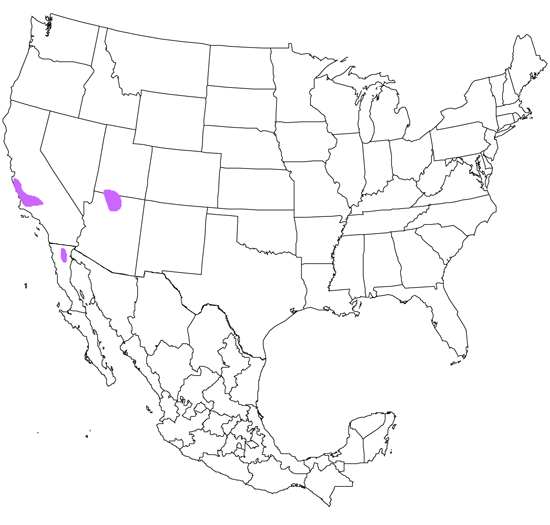California Condor
Gymnogyps californianus

Hawk Like

Length: 47 in. (119 cm )
Ten thousand years ago, California Condors lived on both coasts of North America, from British Columbia to Baja California in the West, and New York to Florida in the East. By the early 1900s, loss of habitat, a low reproductive rate, poisoning, shooting, pesticide residue, lead poisoning, and collisions with human structures caused the condor population to plummet, and only in southern California did a small population survive. By 1985, the entire known population had been reduced to nine birds, and federal and state agencies decided to bring all of the remaining wild birds into captivity in order to preserve the species through captive breeding and eventual reintroduction. The last free-flying California Condor was captured in April of 1987. From 1987 to 1991, the entire population of California Condors existed in two captive breeding facilities -- one at the San Diego Wild Animal Park and the other at the Los Angeles Zoo. Fortunately, California Condors breed readily in captivity, and by 1991 a sufficient number had been produced to reestablish a wild population. Today, their numbers have risen back to over 200, and California Condors fly free again in California, northern Arizona and Baja California, Mexico. \r\n California Condors can live to 60 years of age in the wild. Normally, condors breed once every two years, producing only one egg. The nest is located on a high cliff ledge, cave floor or in a tree cavity of a giant sequoia. The male and female feed the offspring until it learns to find its own food, usually for more than a year. Condors roost in groups and communicate with a combination of hisses, growls, and grunts as well as a system of body language. Condors use their 9 foot 3 m) wing span, to soar up to 150 miles 242 km) a day. They are scavengers, and they rely on their keen vision to follow other scavengers to find dead deer, bear, big horn sheep, seals and other large carrion. ENDANGERED SPECIES.
The four-digit banding code is CALC.
Bibliographic details:
- Article: California Condor
- Author(s): Dr. Biology
- Publisher: Arizona State University School of Life Sciences Ask A Biologist
- Site name: ASU - Ask A Biologist
- Date published:
- Date accessed:
- Link: https://askabiologist.asu.edu/activities/bird/california-condor
APA Style
Dr. Biology. (). California Condor. ASU - Ask A Biologist. Retrieved from https://askabiologist.asu.edu/activities/bird/california-condor
Chicago Manual of Style
Dr. Biology. "California Condor". ASU - Ask A Biologist. . https://askabiologist.asu.edu/activities/bird/california-condor
Dr. Biology. "California Condor". ASU - Ask A Biologist. . ASU - Ask A Biologist, Web. https://askabiologist.asu.edu/activities/bird/california-condor
MLA 2017 Style
Be Part of
Ask A Biologist
By volunteering, or simply sending us feedback on the site. Scientists, teachers, writers, illustrators, and translators are all important to the program. If you are interested in helping with the website we have a Volunteers page to get the process started.



